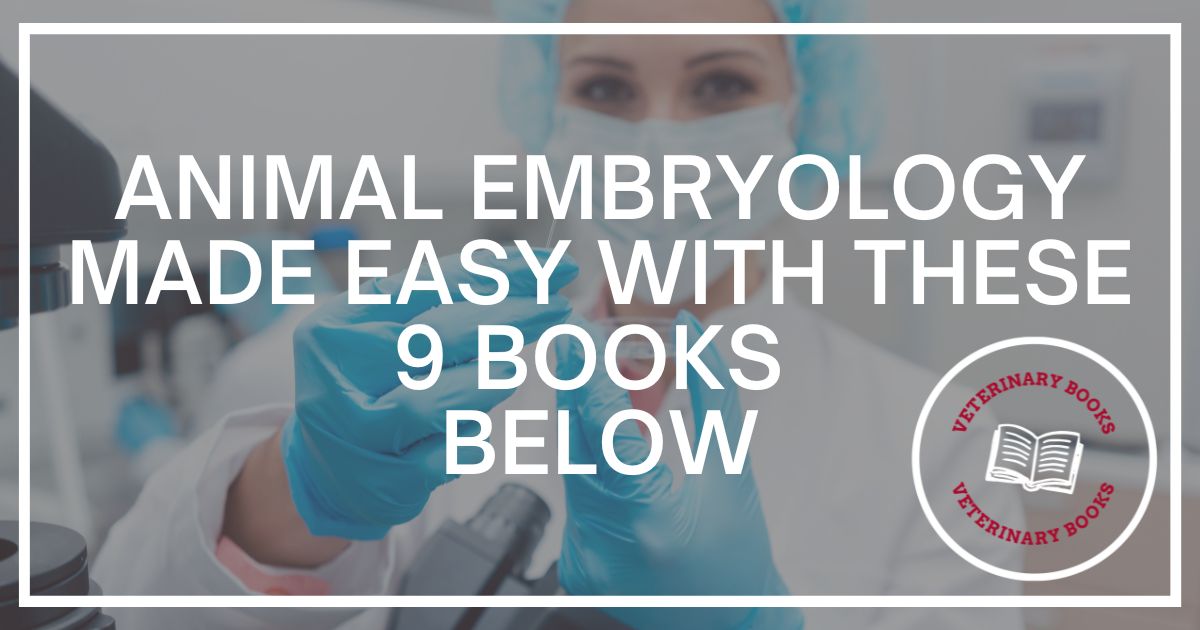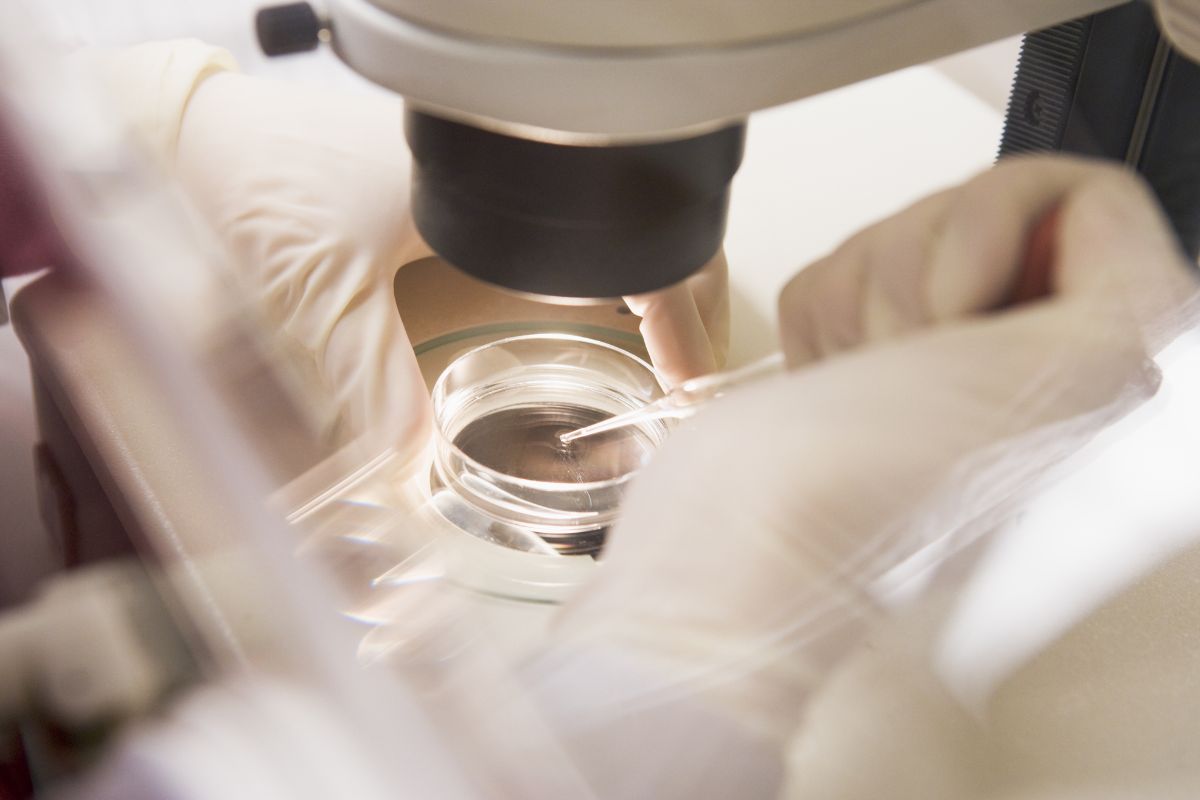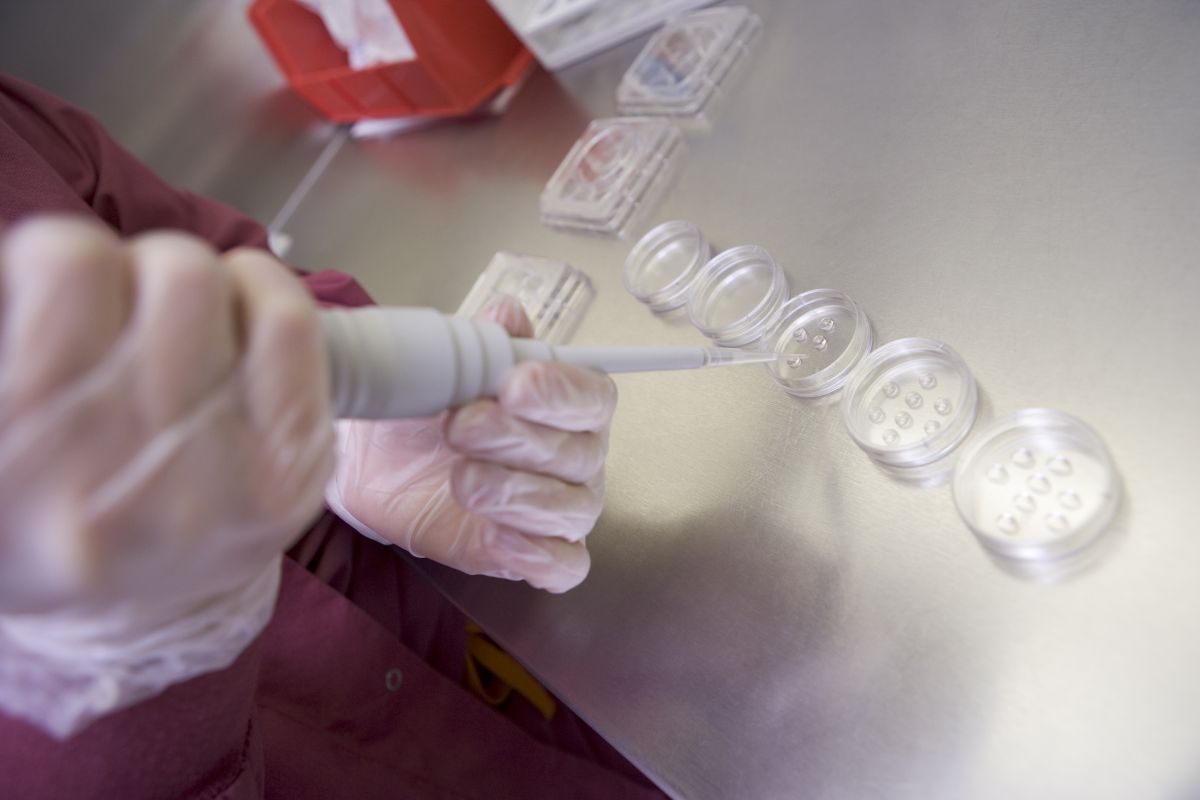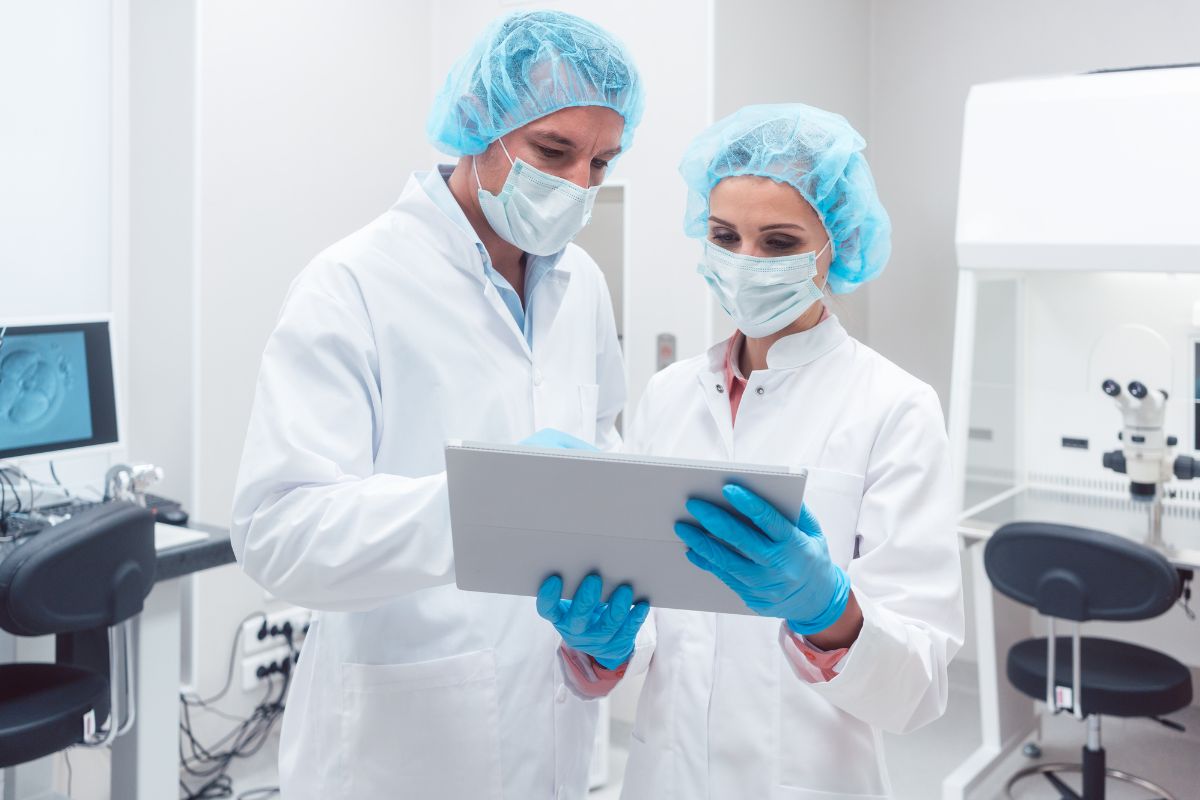What is Animal Embryology?
Animal embryology, commonly referred to as embryogenesis in developmental biology, is an animal embryo’s development stage. The fertilization of an egg cell (ovum) by a sperm cell initiates embryonic development (spermatozoon).
After fertilization, the ovum develops into a single zygote, a diploid cell. (If feasible, please place the precise keyword in the first two lines.)
How is Embryology Evidence for Evolution?
What is embryology in evolution? The investigation and dissection of embryos is embryology. Darwin used the study of embryology to support his views.
Even if the adult forms of distinct species within a class do not resemble one another in any way, their embryos and the development of their embryos are very similar. For instance, chicken and human embryos share many similarities throughout the initial few stages of development.
These early similarities can link to humans and chickens inherited approximately sixty percent of the genes that code for protein from a common ancestor.
Embryology and Evolution History
The origin of evolutionary developmental biology, sometimes known as “evo-devo,” may trace back to the 19th-century discovery by Alexander Kowalevsky that the stages of embryonic development can help classify different kinds of creatures.
Because tunicate larvae have notochords and produce neural tubes, Kowalevsky proposed that tunicates should be chordates rather than mollusks. This is because tunicate larvae resemble chordates and vertebrate embryos more than mollusk larvae.
Since then, a DNA study of the genome of the tunicate has demonstrated that Kowalevsky was correct. Ernest Haeckel, a German scientist, is popular for his notions of “biogenetic law” and “ontogeny recapitulates phylogeny.” Both of these concepts have become widely known.
The drawings that Ernst Haeckel made of embryos gave the impression that an organism recapitulates, or repeats, stages of its evolutionary history while it is in the embryonic stage of development.
The disputed comparative embryology drawings that Haeckel published in 1874 showed a developing human embryo passing through stages that resembled the embryos of other animals, such as embryonic fish, chickens, and rabbits. Haeckel’s work sparked heated debate.
The idea of recapitulation was greatly opposed, most notably by Karl von Baer, who was not a fan of Darwin’s theories. Embryologist von Baer emphasized the distinctions in how embryonic development occurs in vertebrates and invertebrates, which challenged Haeckel’s findings.
Evo-devo specialists of the modern day, such as Michael Richardson, agree that there are parallels in the embryonic development of closely related species. However, these parallels are primarily at the molecular level.
Embryology Evolution Evidence
In the early stages of embryo formation, all vertebrates contain gill slits and tails, according to Darwin’s theory of biological evolution. However, these characteristics may not be there in the adult-form phenotype.
For example, human embryos have a tail that develops into the bone that makes up the tail. According to this pattern, all vertebrates descended from a single ancestor that evolved in this manner, and from that point on, everything went in a different direction.
Examples of Embryology Based on Evolution
Through the study of comparative anatomy, one can find answers to a great deal of embryology and evolution-related problems. The presence of homologous structures throughout embryonic development provides evidence that the ancestral form was a preservation throughout the diversification process.
Comparative anatomy provides evidence that lends credence to the concept of shared ancestry. One such example is the similarity between human forelimbs and a whale’s flippers. The process of embryonic growth is comparable between a human arm and a bat’s wing, despite the obvious differences in appearance.
















Our Top Animal Embryology Books Below
In Ovo Techniques and Treatments in Poultry Eggs Kindle Edition
By Mahmoud Alagawany (Author), Mayada Ragab Farag (Author) Format: Kindle Edition
About This Book
This book gives a complete analysis of in-ovo procedures and treatments in poultry eggs. These techniques and treatments improve embryonic development and decrease economic losses in poultry farms.
There are a total of five chapters in this book. These chapters cover topics such as the fundamentals of in-ovo techniques and the sites of in-ovo injection, nutrient utilization for the development of the chick embryo, the role of early ovo feeding for the chick embryo, and the applications of in ovo technology for a variety of nutrients and natural supplements in poultry.
Book Details
Print length: 131 pages
Language: English
Publisher: Grupo Asis
Publication date: March 22, 2022
Veterinary Embryology, 2nd Edition 2nd Edition
By McGeady (Author)
About This Book
The second edition of Veterinary Embryology reflects the many changes developing in the field; the text has been through full revision and expansion and is now in full color. In addition, numerous pedagogical features and a companion website have come up.
This extremely successful student textbook includes four new chapters, and it is up to date to reflect the most recent discoveries and advancements in the field of embryology.
Written by a group of authors with vast experience in the field of education regarding this topic. Concise and brief chapters devoted to important subjects explain difficult ideas in an approachable manner. The opinions offered in the text have support from several additional tables, flow diagrams, and drawings produced by hand.
In general, this is an excellent resource for anybody starting in the field of embryology/developmental biology or in areas that link to it. The book is straightforward to comprehend at any point in its reading.
Because of the book’s wide use of graphics, it is an excellent educational resource, particularly for ideas that are difficult to visualize. Adding color to the pictures, which results in a significant increase in the degree to which you can understand the visuals, is one of the most important enhancements made in this version.
You can find the most reliable and up-to-date source of information on the subject in the second edition of the book “Veterinary Embryology.” The data is exhaustive, credible, and presented in a structure that makes sense.
It has color drawing supplements that are of a generous size and, on the whole, do a good job of illustrating the many stages of embryo development. These illustrations are also on a website counterpart to this one.”…
“The tables in the book provide a lot of information regarding embryonic characteristics and the stages of gestation for a variety of domesticated animals. In addition, the book discusses the molecular intricacies of gene expression and the stem cell lineage associated with twinning. It provides an in-depth analysis of the formation of hematopoietic cells.
The content of this book more than justifies the cost of purchasing it. It is the best resource currently accessible for information relating to veterinary embryology, and I strongly recommend that you use it. Students will value the highlighted points and the full-color graphics used as textbooks.
The second edition of Veterinary Embryology reflects the many changes that have developed both in an improved understanding of molecular features of embryology and in the rapid advances in manipulating embryonic cells, particularly stem cells.
Both of these developments are available in the many new chapters that are part of the book. A knowledgeable group of individuals penned the text. They all have substantial expertise in the field of education, namely in veterinary embryology and related topics.
Now entirely presented in full color, the book contains information pertinent to numerous disciplines taught during the preclinical, paraclinical, and clinical years of veterinary programs.
In the early chapters, the book describes and explains cell division, proliferation, and differentiation and the production of fetal membranes, implantation, and placentation in sequential order. In the succeeding chapters, we will investigate the various body systems’ beginnings, evolution, maturation, and progression.
The process of determining the age of the embryo and the fetus and the genetic, chromosomal, and environmental factors that can hurt prenatal development is in the discussion.
There are now four additional chapters addressing the historical elements of embryology, stem cells, embryo mortality in domestic species, assisted reproductive technologies in domestic animals, and more. Additionally, a reading list is available at the end of each chapter to provide additional sources of information.
Book Details
ASIN: 111894061X
Publisher: Wiley-Blackwell; 2nd edition (January 27, 2017)
Language: English
Paperback: 400 pages
ISBN-10: 9781118940617
ISBN-13: 978-1118940617
Equine Embryo Transfer 1st Edition
By Patrick M. McCue (Author), Edward L. Squires (Author)
About This Book
This book provides a concise history of equine embryo transfer. It discusses in therapeutically applicable terms the procedures, equipment, and treatment guidelines that are now in use because embryo transfer is developing into a lucrative industry, particularly in breeding racing stock (horses and camels).
It is currently an extremely significant component of equestrian practice. Since the early 1960s, both Ed Squires and Pat McCue have actively participated in developing embryo collection and transfer procedures. As a result of their research and clinical experience, both individuals contribute effective techniques and innovations to the process.
This book summarizes the clinical experience gained thus far and demonstrates how you can immediately apply it to equine practice. Those who work in general equine practice for reference, those who specialize in equine reproduction, those who study animal science at the graduate level (equine track), and those who breed horses will find this book greatly beneficial.
It includes everything in the process of horse embryo transfer work from the beginning to the end. This book provides useful information to anyone interested in learning embryo transfer and anyone who is already performing some embryo transfer but would need more knowledge.
You will find the graphics and charts to be extremely helpful due to how well they complemented and expanded upon the text.
In addition to that, this book offers a substantial amount of descriptive statistics covering a significant number of embryo transfers. Anyone interested in horse embryo transfer should get it because it is a wonderful deal and will make a lovely addition to their collection.
Book Details
Publisher: Teton NewMedia; 1st edition (February 18, 2015)
Language: English
Paperback: 184 pages
ISBN-10: 1591610478
ISBN-13: 978-1591610472
By Brad Bolon (Editor) Format: Kindle Edition
About This Book
Pathology of the Developing Mouse aims to be as comprehensive a reference as it can be, covering the design, analysis, and interpretation of abnormal findings found in developing mice before and shortly after birth.
This book is not only a “how to do” manual for developmental pathology experimentation in mice but also, perhaps, more importantly, a “how to interpret” resource for pathologists and other biomedical scientists who face for the first time or the hundredth time defining the significance of distorted features in some fantastic murine developmental monstrosity.
In particular, this book is specifically to be a “how to do” manual for developmental pathology experimentation in mice. When putting together and using a developmental pathology tool kit, one is likely to come across a wide variety of topics, all of which are in this volume and include:
- Baseline characteristics of the mice’s anatomy and physiology as they develop the fundamentals of sound experimental design and statistical analysis as applied to research on mouse developmental pathology
- Procedures for anatomic pathology examinations, which can evaluate structural changes at the macroscopic (gross), microscopic (cells and tissues), and ultrastructural (subcellular) levels, using either conventional autopsy-based or novel non-invasive imaging techniques;
- Methods for diagnostic testing in clinical pathology, specifically those that evaluate the biochemical and cellular makeup of fluids and tissues;
- Options and protocols for in situ molecular pathology analysis to undertake site-specific explorations of the various mechanisms responsible for producing adverse findings (i.e., “lesions”) during development; and
- Guides to the interpretation of anatomic pathology and clinical pathology changes in the animal (embryos, fetuses, neonates, and juveniles), and it’s a support system that is well referenced and illustrated (placenta).
Book Details
ASIN: B00UVA6ZDU
Publisher: CRC Press; 1st edition (April 24, 2015)
Publication date: April 24, 2015
Language: English
File size: 26,457 KB
Text-to-speech: Not enabled
Enhanced typesetting: Not enabled
X-ray: Not enabled
Wordwise: Not enabled
Print length: 446 pages
Lending: Not Enabled
Invertebrate Embryology and Reproduction 1st Edition, Kindle Edition
By Fatma El-Bawab (Author) Format: Kindle Edition
About This Book
The study of the practical and theoretical goals of the descriptive embryology of invertebrates is the focus of the book Invertebrate Embryology and Reproduction. This book also includes discussions on reproduction in these different groups of animals.
It covers the embryology of invertebrate animals, beginning with the Protozoa and continuing to the Echinodermata, Protochordates, and Tunicates. It explains several morphological and anatomical expressions that are in use in the field.
These categories include aquatic invertebrates that are significant to the economy, such as crustaceans, and medically substantial invertebrates and arthropods that are important to the economy.
Each chapter begins with a discussion of the taxonomy of the phylum and species covered in that chapter. This provides the reader with the ability to locate the systematic position.
This article discusses the definition of the phylum, its general characteristics, classification, agametic reproduction, gametic reproduction, spawning, fertilization, development, and embryogenesis. It contains the most recent findings in the field, along with detailed figures and photographs that illustrate key ideas.
It brings together research data from the field that are difficult to obtain, not only in Egyptian libraries but also globally, and previously only found through specialized references that were not widely available.
Clarifying descriptions of various species through arresting photographs and electron microscopy studies of the specimens. “Each chapter focuses on a specific representative’s embryogenesis and, in some cases, reproductive biology, highlighting significant aspects of both processes.
Reading through these is entertaining, and the writing style and flow are both understandable most of the time. However, the absence of certain information is just as important as its presence: most chapters are merely incomplete listings of biological details roughly organized taxonomically rather than comprehensive treatments of each group.
Major species are either not represented (like echinoderms, annelids, and sipunculans), or they only make up a small percentage of the total (such as the arthropods, which are strangely void of insects, myriapods, and chelicerates).
However, perhaps the most notable omission is the absence of any comprehensive developmental, ecological, or evolutionary framework within which to position, interpret, and analyze the variety of embryonic development in invertebrates.
Because of this, Invertebrate Embryology and Reproduction is not so much a comprehensive treatment of invertebrate embryogenesis as it is more of an incomplete reference catalog.
Libraries will likely be the places where it is most useful, both as a possible reference and as a stepping stone toward primary literature that may otherwise be harder to find.” —QRB — This text is from the edition that was in paperback.
Provides a centralized location for all the current information on invertebrate embryology and ensures that it is up to date.
Book Details
ASIN: B0844MZYQN
Publisher: Academic Press; 1st edition (January 18, 2020)
Publication date: January 18, 2020
Language: English
File size: 282,378 KB
Text-to-speech: Enabled
Enhanced typesetting: Enabled
X-Ray: Not enabled
Word Wise: Not enabled
Print length: 931 pages
Lending: Not enabled
Oocyte Physiology and Development in Domestic Animals 1st Edition, Kindle Edition
By Rebecca Krisher (Editor) Format: Kindle Edition
About This Book
This book provides readers with a fundamental understanding of these important processes and summarizes this important field of research. Oocyte Physiology and Development in Domestic Animals examines the most recent advances in studying physiological and biochemical mechanisms underlying oocyte growth and development.
This book was for domestic animals. This book discusses various molecular and physiological mechanisms, such as the initiation of oocyte growth during folliculogenesis and in vitro follicle culture to support oocyte competence. These mechanisms are essential to both the health and quality of oocytes.
The physiological processes covered range from gene expression to metabolism, and the goal is to use these aspects to find biomarkers that will further advance the field. In addition, the text investigates the impact that the environments of in vitro maturation have on the quality of the oocytes and the final developmental product.
The oocyte, or egg cell, is a fascinatingly complex cell that is the primary structural component of developing embryos. This one cell is the foundation for development from a newly fertilized zygote to a multicellular organism that can carry out its functions.
This book offers valuable and focused coverage of the physiology and evolution of oocytes, which is essential for unlocking the molecular mechanisms that control oocyte developmental competence in reproductive processes. Oocyte Physiology and Development in Domestic Animals is for readers interested in domestic animals.
The book “Oocyte Physiology and Development in Domestic Animals” offers a comprehensive overview of the physiology of oocytes, covering a wide range of topics. The chapters examine various biochemical mechanisms at work within the oocyte at key stages of its development.
This article covers recent developments in the field, such as the discovery of biomarkers and the implementation of stringent screening procedures for oocyte competence. Additionally, molecular and systems biology approaches utilized during in vitro oocyte maturation are discussed.
Oocyte Physiology and Development in Domestic Animals is a book that will be of interest to anyone who works in the animal and reproductive sciences because it provides comprehensive coverage of this rapidly developing field of research.
Book Details
ASIN: B00BJOJ1F6
Publisher: Wiley-Blackwell; 1st edition (February 19, 2013)
Publication date: February 19, 2013
Language: English
File size: 3,096 KB
Text-to-speech: Enabled
Screen reader: Supported
Enhanced typesetting: Enabled
X-Ray: Not enabled
Word Wise: Not enabled
Print length: 248 pages
Lending: Enabled
Atlas of Chick Development 3rd Edition, Kindle Edition
By Ruth Bellairs (Author), Mark Osmond (Author)
About This Book
The Atlas of Chick Development, Third Edition, is a classic work that covers all of the major events that occur during the development of chicks. This edition features extensive revisions, including new and more detailed photographs, enlargements showing special interest and complexity regions, and new illustrations.
The revised text and expanded illustrative material describe the intricate changes during development and accounts of recent experimental and molecular research that have transformed our understanding of morphogenesis. These accounts are in the revised and expanded material.
Because of these extensive revisions, this book has become an indispensable tool for developmental biologists, geneticists, molecular biologists, poultry scientists, biochemists, immunologists, and other types of life scientists who use the chick embryo as a research model.
Those interested in entering this burgeoning field, which has ignited from the increased insight into events surrounding organ and tissue differentiation, will find this an invaluable tool to help them grow a fundamental understanding of morphogenesis.
It remains the gold standard; it is the only book that provides a detailed account of the development of a chick from fertilization to hatching.
More than 750 photographs and illustrations are available, along with 410 labeled histological sections and 85 new high-quality plates, to demonstrate the major anatomical events that occur from the earliest stages up until 13 days after incubation.
It contains over two hundred and fifty labeled and detailed scanning electron micrographs, displaying a wide variety of tissues in exquisite detail. The reader gets critical reviews on various aspects of this rapidly evolving field and extensive references that have been available up to date.
Book Details
ASIN: B00KX1GLGI
Publisher: Academic Press; 3rd edition (May 19, 2014)
Publication date: May 19, 2014
Language: English
File size: 93,213 KB
Text-to-speech: Enabled
Screen reader: Supported
Enhanced typesetting: Enabled
X-ray: Not enabled
Word wise: Not enabled
Print length: 436 pages
Lending: Not Enabled
Comparative Placentation: Structures, Functions, and Evolution 2008th Edition, Kindle Edition
By Peter Wooding (Author), Graham Burton (Author) Format: Kindle Edition
About This Book
The world of science is full of intriguing mysteries, such as why there are so many different placental structures when the structures of other mammalian organs are so consistent. What drove the evolution of the various placental forms, and how did it happen?
Comparative placental studies can help determine the factors common to placental growth, differentiation, and function, as well as the significance of those factors to the various possible evolutionary pathways.
Comparative Placentation is the only book that presents data that is up to date and illustrates the vastly different structures that vertebrate placentas, ranging from fish to humans, can have while still performing the same functions.
This information is necessary for selecting appropriate models to investigate specific practical problems of abnormal or impeded growth in human and animal placentation.
This book is the most authoritative publication in this field and a vital source of information for anyone interested in reproductive physiology, anatomy, or medicine because it contains a unique collection of the best light and electron micrographs from the previous thirty-five years. These micrographs precisely illustrate the structural range that exists within each taxon.
Book Details
ASIN: B002BA5066
Publisher: Springer; 2008th edition (August 22, 2008)
Publication date: August 22, 2008
Language: English
File size: 7308 KB
Text-to-speech: Enabled
Enhanced typesetting: Not enabled
X-ray: Not enabled
Word wise: Not enabled
Print length: 312 pages
Lending: Not enabled
Essentials of Domestic Animal Embryology 1st Edition, Kindle Edition
By Poul Hyttel (Author), Fred Sinowatz (Author), Morten Vejlsted (Author), Keith Betteridge (Author, Editor)
About This Book
This reference on veterinary embryology covers both general and special embryology. General embryology refers to the development of an embryo from the formation of gametes through fertilization and initial embryogenesis up to the stage where organ formation initiates. Special embryology refers to the development of organ systems.
In addition, there is a chapter in the book that discusses teratology, another chapter that discusses assisted reproductive technologies, and a chapter that discusses veterinary and societal concerns.
This textbook has the veterinarian student in mind, and as a result, it features an approachable writing style along with high-quality line drawings and color pictures.
However, this work continues to be an excellent reference and study guide, which numerous embryologists and veterinary students have been waiting for for a very long time since the book Noden and de Lahunta was available in print.
Essentials of Domestic Animal Embryology, written by Hyttel et al., is a deserving successor to the work done by McGeady et al. and even exceeds the quality of that work. It is up to date in every aspect, including how it approaches the topic, the format, and length of the book, the language used, and the vast number of images included.
It will be useful as a reference manual for many years.” In May 2010, Pieter Cornillie received an appointment as a Lecturer in the Department of Veterinary Embryology at Ghent University.
Book Details
ASIN: B0045JK2GO
Publisher: Saunders Ltd.; 1st edition (September 23, 2009)
Publication date: September 23, 2009
Language: English
File size: 28,045 KB
Simultaneous device usage: Up to 4 simultaneous devices, per publisher limits
Text-to-Speech: Enabled
Screen Reader: Supported
Enhanced typesetting: Enabled
X-Ray: Not Enabled
Word Wise: Not Enabled
Print length: 472 pages
Lending: Not Enabled
The Circle of Life: The Stages of Animal Development
There is a great diversity of embryonic kinds that you may find across the animal kingdom; nonetheless, the majority of patterns of embryogenesis are variants on the following five themes:
- Cleavage happens right after fertilization; thus, it comes right after that. Cleavage is a process that involves a series of highly rapid mitotic divisions. This process divides the vast amount of zygote cytoplasm into many smaller cells. These cells are blastomeres and typically form a spherical called a blastula when cleavage is complete.
- Once the pace of mitotic division slows, the blastomeres will go through spectacular motions in which they will change their locations concerning one another. This process, known as gastrulation, involves the significant rearranging of cells, and the stage that locates the embryo is the gastrula stage. As a consequence of the process known as gastrulation, the embryo possesses three germ layers: the ectoderm, the endoderm, and the mesoderm.
- After establishing the three germ layers, the cells interact and rearrange themselves to generate tissues and organs. The formation of organs is organogenesis. It is common for many organs to contain cells produced from more than one germ layer, and it is also not uncommon for the inside of an organ to form from one layer while the outside derives from another layer. As an illustration, the ectoderm is responsible for the production of the epidermis, whereas the mesoderm is responsible for the production of the dermis. In addition, during the process of organogenesis, several cells move extensive distances from their point of origin to their ultimate destination. The precursors of blood, lymph, pigment, and gametes are all found among these migrating cells. Most of the bones that make up our face originate from cells in the dorsal part of the head that move to the ventral side throughout development.
- In many different species, a particular region of the egg’s cytoplasm is responsible for giving rise to cells that are the precursors of the gametes (the sperm and egg). The gametes and the cells that give rise to them are germ cells, whose primary purpose is to carry out the reproductive function. Somatic cells are the name given to all of the different types of cells in the body. During the process of animal development, one of the earliest differentiations that often takes place is the division of cells into somatic cells, which are responsible for the production of the individual body, and germ cells, which take part in the formation of subsequent generations. In the end, the germ cells will move to the gonads, which is where they will undergo differentiation into gametes. Gametogenesis is the process that refers to the development of gametes, and it typically does not finish until the organism reaches its full physical maturity. When the gametes reach adulthood, they are ready for release so that they can take part in fertilization and begin a new embryo. The maturing process known as senescence ultimately results in the adult organism’s demise.
- The organism that emerges from the egg or is born into the world of many animals is not sexually mature when it first enters the world. Indeed, in most animals, the young organism is a larva that may look drastically different from the adult. Larvae often represent the stage of life that is for feeding or dispersal. In many different kinds of organisms, the larval stage is the one that lasts the longest, whereas the adult stage is a brief one that’s only for reproducing. Adult silkworm moths, for instance, do not possess mouthparts and so are unable to consume food. The larvae must consume a sufficient amount of food so that the adult can mature and mate. The majority of female moths mate as soon as they emerge from their pupal stage, and they only take to the air once, and that is to lay their eggs. After that, they perish. You can find more information on animal growth and development principles in the books in this article.
We’ve Got You Covered
Animal breeding sciences deal with how humans manage and care for farm animals to make money. It also refers to the effective use of a species in agriculture that benefits people. It includes the process of selective breeding and raising livestock to promote desirable qualities in animals for utility, sport, pleasure, or study.
Determining breeding goals and precisely identifying the ideal animals for future breeding is essential for improving cattle genetics.
Traditional breeding programs include the following steps: the design of animal breeding goals, which include improvement traits like milk, wool, growth, carcass, and fertility; application techniques, such as artificial insemination and embryo transfer, are methods in use to ensure that females breed regularly and to improve herd genetics.
Based on quantitative genetics theory, estima- The genetic improvement of animals is a lengthy process. The following biotechnologies in embryology are currently in use or will be in use to improve the genetic makeup of animals:
- Genomic reconstruction through somatic cloning and parthenogenesis can produce specific animal populations.
- Genomic modification during embryogenesis, such as transgenic breeding strategies, can create new genetic variations in populations.
- Animal generation interval, which you can shorten with in vitro production of embryos.
- Economy efficiency from the animal population can significantly increase by embryo sex selection.
- You can produce a rare breed or rare pedigrees within a rare breed.
Thus, the concept and theory of animal embryo breeding science emerge due to the growth of modern biotechnology. Animal scientists, students, and breeders will benefit from understanding and using its theory and technology to speed up animal improvement, change the population’s genetic makeup, and develop new animal breeds.














